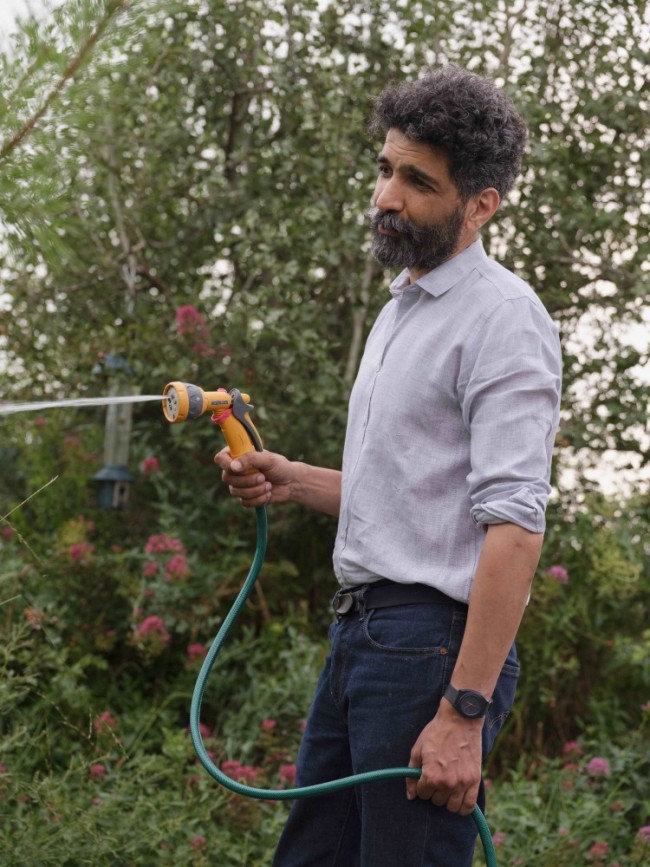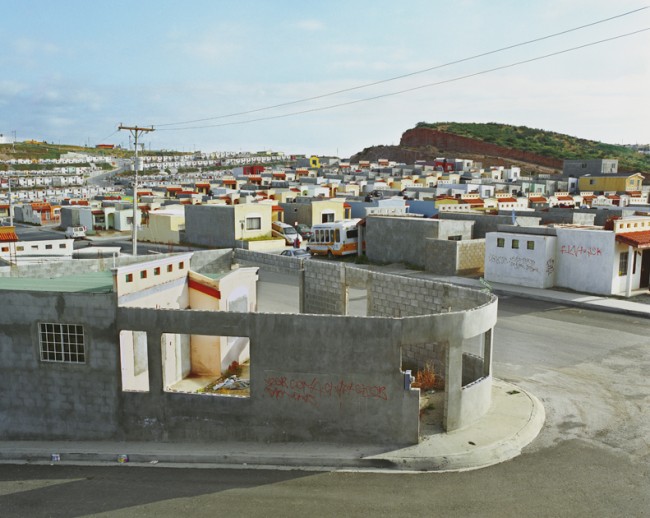GRIME AND ARCHITECTURE: Wot Do U Call It? Urban?
Dizzee Rascal and Wiley in front of Crossways Estate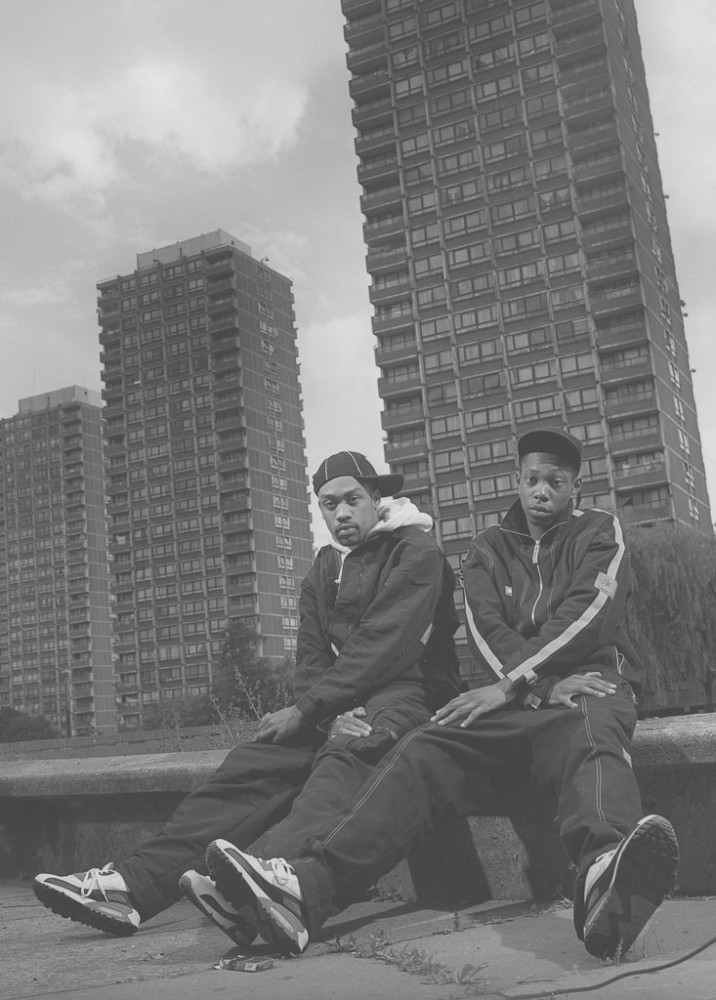
Exploding out of east London council estates at a time of profound urban change, the story of the musical style grime is as much spatial as it is sonic. In Dan Hancox’s new book Inner City Pressure, he discusses the electrifying scene through detailed interviews with MCs such as Dizzee Rascal, Wiley, and Skepta, who spawned the most important genre of a generation. More than this, the book chronicles London from the early 2000s through to 2018, a time in which state-led gentrification, the 2012 Olympics and a heady melange of glass and steel changed the city for good, while grime moved from Bow basements to the Barbican, from Canning Town to Coachella. PIN–UP spoke to the author about the architecture and urbanism of grime.
Starting at the scale of the individual room, there are a number of rooms that are particularly important in the development of grime as a sound and a scene. Jammer’s basement or the tiny Deja VU fm box room where the infamous Conflict was filmed come to mind...
A tiny tiny little box. They’re often really claustrophobic spaces. Which helps explain some of the audible claustrophobia in the music and that intensity. These are not 30-minute post-rock opuses spread out over soundscapes that conjure wide horizons. A lot of grime’s key protagonists grew up in high density high-rise blocks in Tower Hamlets in East London. All the reminiscences of people like Tinchy Stryder and Dizzee Rascal who grew up in the Crossways estate are of very cramped spaces. For example, Tinchy Stryder talks about how supportive his mum was, about having him and his friends making music in their tiny flat in his bedroom. As he says, grime is not anything calm or quiet.
I think that’s something you can hear in another of grime’s important rooms, the radio studio, where you can hear people bouncing off each other while freestyling, you're basically listening to a group of people hanging out...
Yeah completely. They’re finishing each other's lyrics, joining in with a sort of choral echo. Particularly if it's a punchline to a great 16 or 8 bar or reload bars — the killer punchlines. And I think the pirate radio studio is also a broadcasted version of what happens in the playground. The playground is another critical space for grime, where a lot of these skills are developed in the first place. A number of MCs never had any particular plan or desire to get into music per se, they were just hanging out with other people that were making music. Shystie was at sixth form college, not particularly interested in music, she thought, but hung out with a group of boys that were really into rapping and we like, “Go on Shy, you have a go.” As soon as she started she was like, “Right, now I need to be better than all the boys that I hang out with and I need to show them up,” which she very quickly did.
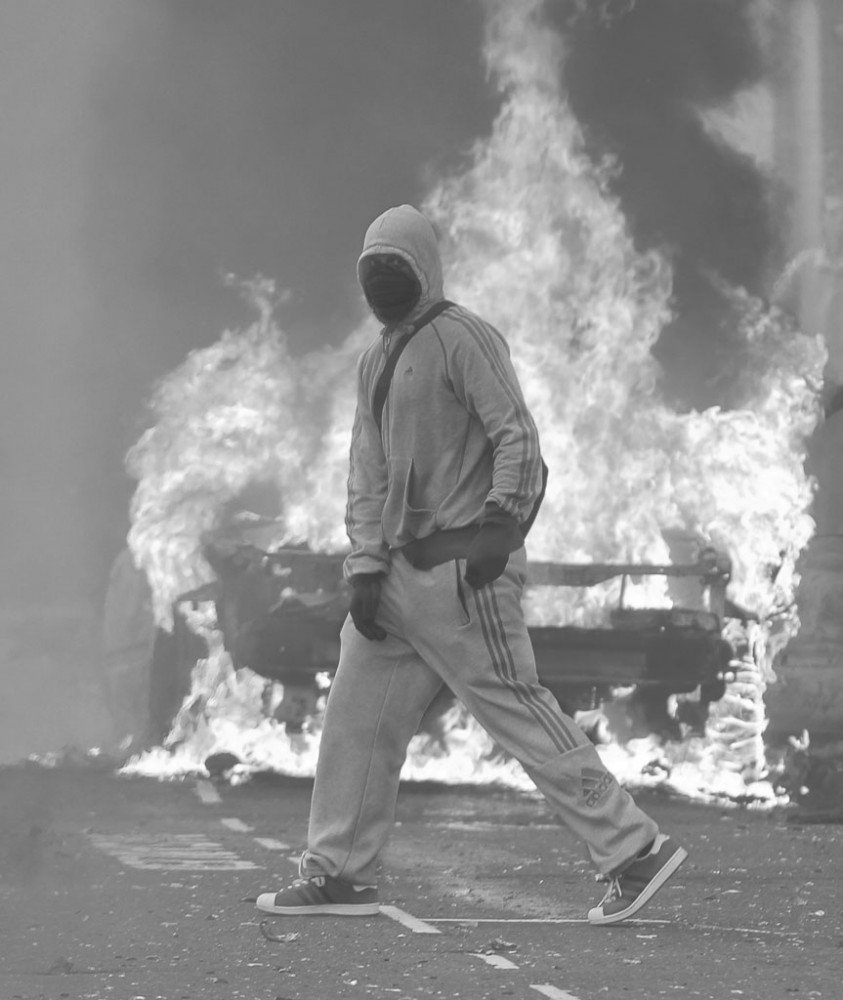
Kerim Oktem's phot of The 2011 riots in London
It’s interesting how the early growth of an MCs reputation matches a kind of geographical growth through the area where they’re from.
If you were to take the playground or bedroom as rooms that were important to Shystie, she then sort of graduates to the next stage, going on pirate radio and going to raves, and then while moving around the area being spotted as ‘that girl from the other school who’s a really sick MC.’ Yeah Shystie said that was the next stage on the road to fame. A local fame, where people who weren’t in your immediate peer group at school, but were the same age and listened to the same music, once they started to know your name then your local fame is growing. And then maybe it spreads outside the borough, from Hackney to Haringey or to Tower Hamlets. That kind of incremental expansion of who’s listening seemed to happen to a lot of those early grime MCs. They would have been known in the estate or in the school or maybe the tiny little pirate station that has a cheaper aerial, the radius of how far it can be heard isn’t as far. But then maybe you graduate onto Rinse FM or onto Deja Vu which has a bigger remit in a literal geographical sense. It can reach further — it has an actual quantifiable distance.
To jump back down to the scale of the individual building, there’s one that comes up a lot, which isn’t an estate at all: Canary Wharf, or One Canada Square, as it’s officially known. Canary Wharf was something of a symbol, especially for MCs like Tinchy Stryder and Dizzee Rascal. How important was it?
Clearly anyone in the east boroughs — Tower Hamlets and to a lesser extent Newham — can see One Canada Square, the main tower in Canary Wharf from most places. You don’t have to be on top of a tower block to see it. You can see it walking around the streets of Bow, Poplar, and Limehouse. And it's not something on a distant horizon that you can see sticking up above through the trees, you're literally in its shadow. Some of the tallest estates around there are about 25 storeys, whereas 1 Canada Square became the tallest building in London at 50 storeys, at the time. It really is colossal. It made a lot of sense to compartmentalise that phase of capitalism in those buildings because they were doing very different things to what was generally done in the City of London. Where the markets in credit default swaps and futures and derivatives and financial services more generally flourished in the early 2000s and inflated this bubble that has everything to do with the poverty of the council estates very nearby. So there’s a real oppositional relationship between those council blocks that have been under-served and left, as Wiley put it, until they were almost on the ground. So there’s a fair amount of resentment of Canary Wharf, as somewhere “we weren’t supposed to be,” as Tinchy Stryder put it.
Elsewhere in the book you mention that grime is not a particularly visual genre. I’m interested in that because of DVDs like Risky Roads, as well as Channel U on TV, and later SB.TV online, it seems to me there has been quite a lot of visual culture in grime, and more often than not this has centred around housing estates. For example, Risky Roads features off the cuff performances by MCs hanging out on their estates. So I was wondering how important you think the iconography of particular estates is for particular MCs and the development of the scene?
I think the visual iconography that is associated with particular artists is very important, it’s just there is a sea change around 2004–05 when the DVDs started coming out and Channel U launched. The iconography of the estate is really important, to the point that you have adapted names for the local area; Wilehouse as an alternative name for Limehouse signify one specific estate where Roll Deep hung out and grew up. Especially the basketball court there, another small space of great critical importance to the emergence of grime. That’s where numerous music videos, including their first “When I’m Ere,” were shot. Key protagonists that I’ve interviewed that weren't actually in Roll Deep told me about the first time they were invited to go down to the basketball court there to meet Roll Deep, people like JME and Skepta who came from outside the borough. So those bits of imagery are very important to grime, it’s just there wasn’t a lot of it in those early years, 2002, 2003, and then it started to change.
So perhaps because these videos are so easily accessible now with YouTube, they have taken on a kind of retrospective significance?
Yeah I think that’s true. Because they are so widely accessible and so iconic, places like Jammer’s basement and so on. Also there isn’t a huge wealth of material, visually, from the early days. There aren’t many photos which means the ones that have survived have become iconic. The visual iconography of pirate studios is particularly interesting, because there was a “no snitching” attitude around the location of pirate studios because it was illegal and supposed to be semi-secret. So those were particularly undocumented spaces, visually speaking, which again means the photos we have of Skepta on the mic at Rinse FM in 2004 are particularly treasured and iconic because they’re so rare.

Snippet from Skeptas Shutdown Video
I think Skepta’s an interesting one here, in terms of visual culture and London’s geography, there were two huge moments in 2015 with the Shutdown video shot at the Barbican and then also the show in Shoreditch, which seemed to be these critical moves away from his neighborhood, kind of saying, "I’m out of my neighborhood, but I can assert my presence in these other spaces…”
In Shoreditch especially! In this nightlife area! Palmers Green or Meridian Walk where Skepta grew up, they’re not nightlife areas. Same goes for Bow, same goes for Newham. Ten, 15 years ago when grime was starting out, it had a little bit more edge. It was a bit easier for grime nights to be put on there at places like Plastic People, or there was a great night put on by journalist Chantelle Fiddy called Straight Outta Bethnal, Cargo used to have grime on. But by the time of Skepta’s Shutdown guerilla gig, grime had been slowly pushed out of Shoreditch. Plastic People had gone, there was no grime at Cargo, Straight Outta Bethnal was also unceremoniously ended by the police in 2006. So it’s hard not to see the return to Shoreditch as a stamping of authority, a way of saying, “Actually no we can play here. Fuck you.”
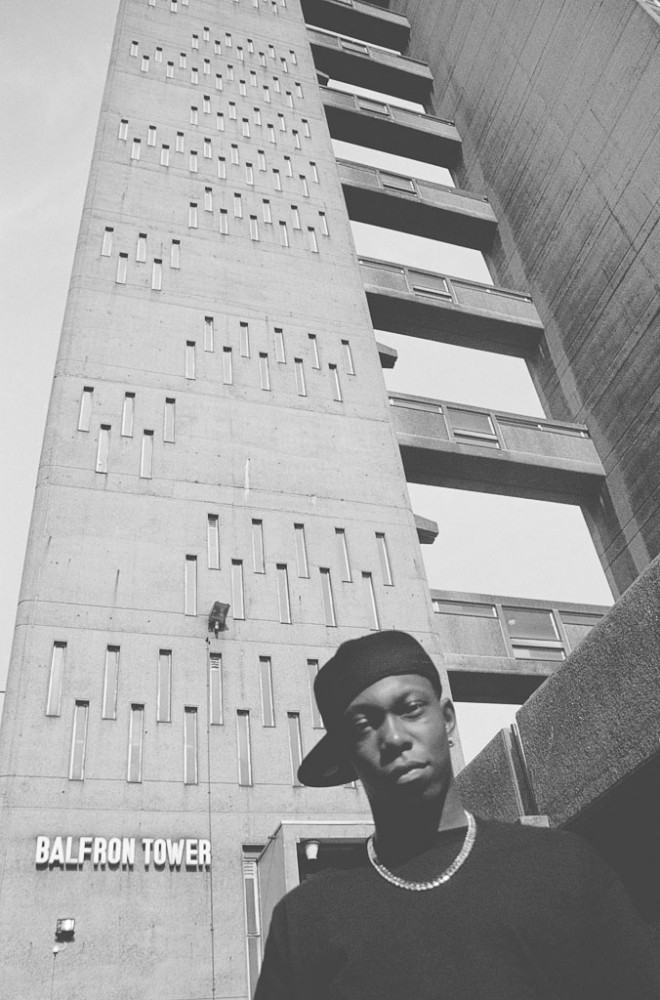
Photo taken by Peter Beste of Dizzee Rascal and Erno Goldfinger’s Balfron Tower
In the book you talk about the topography of London, what role has that played in the history of grime?
Hills are quite important to me. Only insofar as getting a sense of perspective over the city helps you feel a sense of ownership over the city. I’ve always found that in cities like Barcelona where you can go up on a mountain and look down at everything is a great way of exhaling. I grew up in a city and can't see myself not living in a city, this one specifically, but the claustrophobia and tension and stress that builds up after a certain period of time needs releasing in some way.
London generally doesn’t have many hills and it also doesn’t really have a history of high-rise buildings in the way Manhattan or Shanghai do. It’s only now that's beginning to change. In the period before this current glut of building, most of the tallest buildings in the city were council tower blocks. So you had a situation where Slimzee and Geeneus, who set up Rinse FM, were going onto the roof of 24, 25 storey blocks (rigging up aerials to broadcast the formerly pirate radio station), had a perspective that almost nobody else in London, whatever their class or wealth background was getting. It was, to an extent, teenagers doing what teenagers have long wanted to do which is just break into places they can’t access, just for the thrill of it. And if you combine that thrill with standing on top of a 24-storey block, and the fact that you are setting up a radio station so you can broadcast the music you love to your mates, you can totally see the appeal. Getting the stories about how that felt was really important to me. It was really illuminating to just hear how exhilarating they found it and the way that contrasts with the claustrophobia of growing up in a small flat with three or four siblings.
So do you think the topography of the city creates that claustrophobic atmosphere that then plays into the music?
Yeah I think London is claustrophobic because of its lack of hills and height in general. Which is why it’s so refreshing to get on top of a hill and get that sense of scope over the city. There’s something about being bogged down on ground level and never being able to see a horizon.
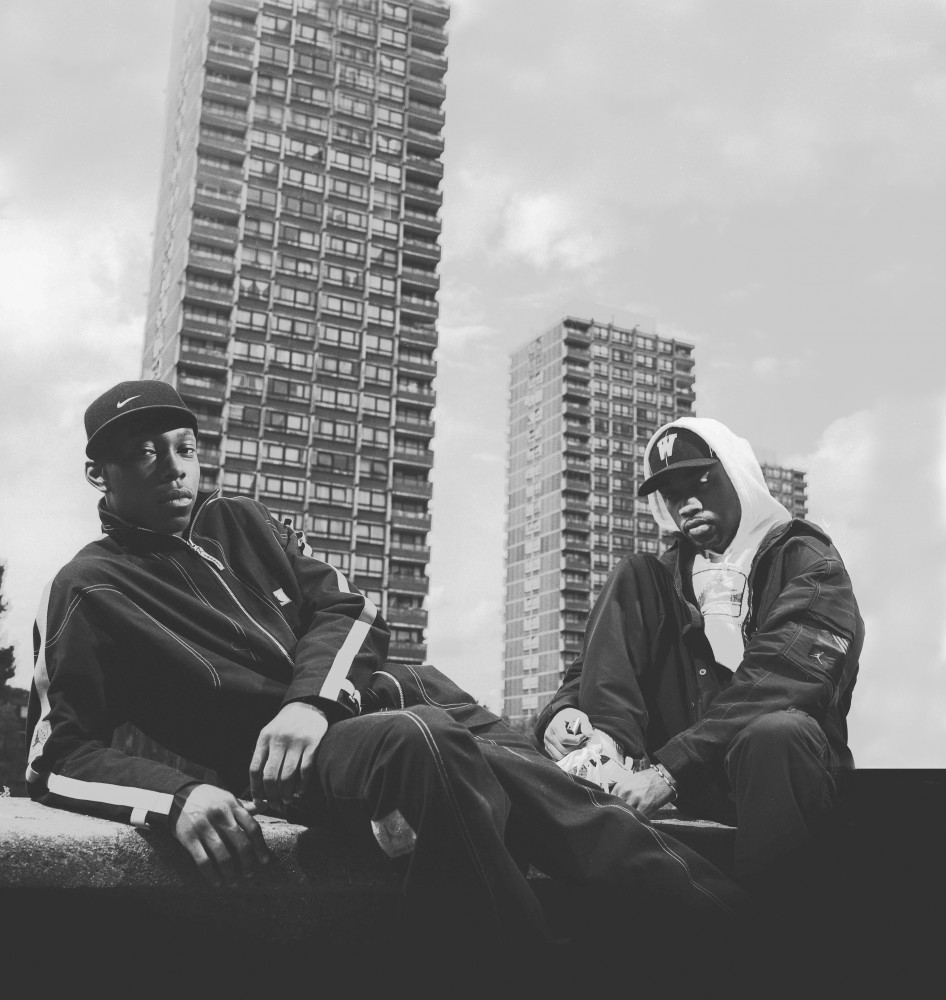
Dave Tonge's photo of Dizzee Rascal and Wiley in front of Crossways Estate
Inner City Pressure is about how grime is interlinked with the city over the last 15 years or so. Do you still see that link playing out, despite grime and London both being very different to how they were in the early 2000s?
The current generation of grime artists, who would have still been in nursery or primary school when grime was kicking off, people like Stormzy and AJ Tracey, are still making tunes that, sonically and lyrically, reflect the London around them. That’s a London where inequality levels have not gotten any better. So you have people like Stormzy or Big Zuu, who did a song tribute to Grenfell Tower, reflecting the key issues of the day that affect the lives of people who listen to grime and the people who make grime. Something like Grenfell Tower resonated across society, but it particularly resonated for people who had grown up in council tower blocks like Grenfell in other parts of London, or indeed in AJ Tracey and Big Zuu’s case, very nearby in West London. They had friends in the tower who passed away. And so grime’s propensity and ability to continue to document that stuff, I don’t see that changing at all.
Interview by George Kafka
Inner City Pressure is available through Harper Collins.

